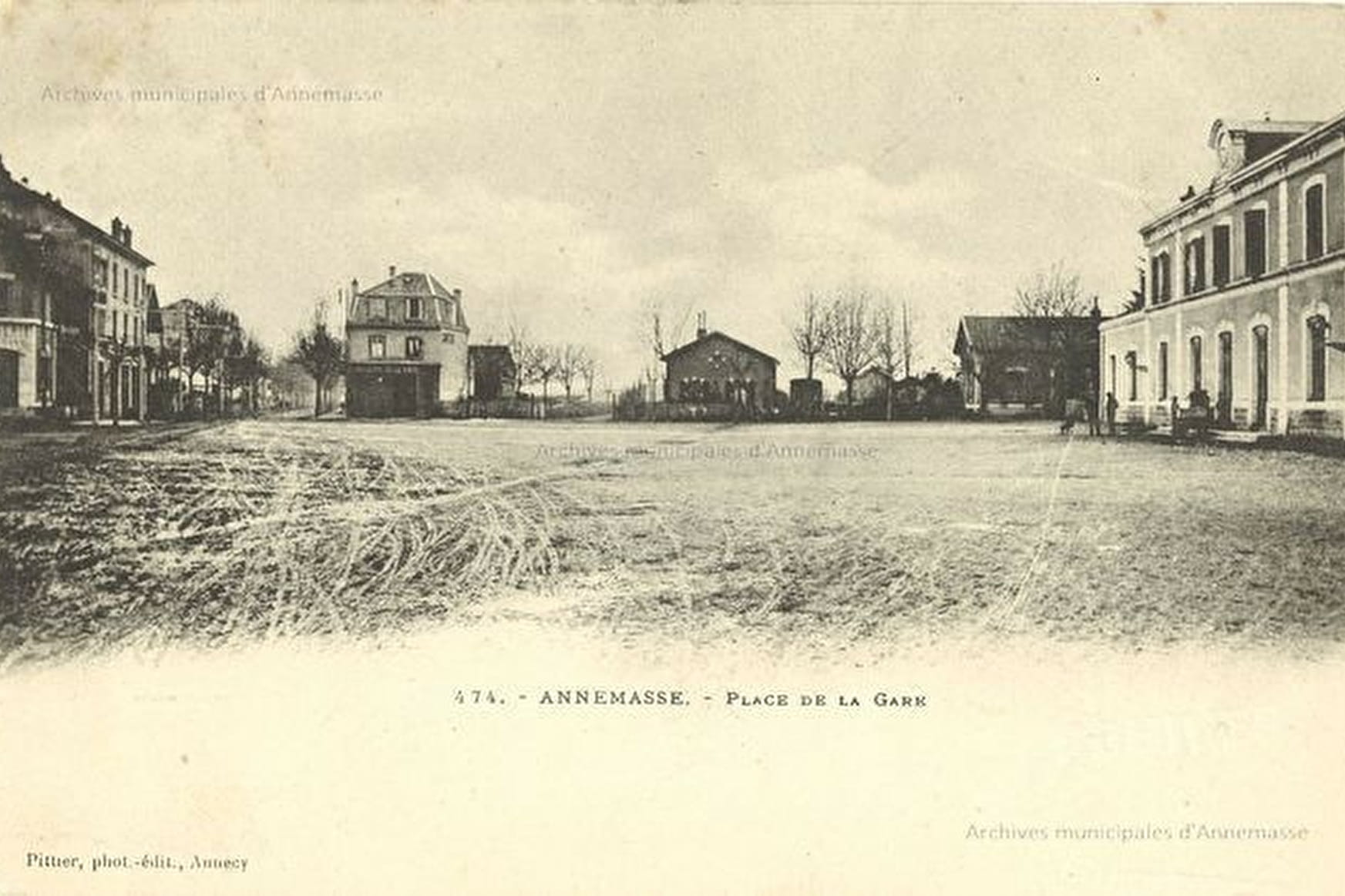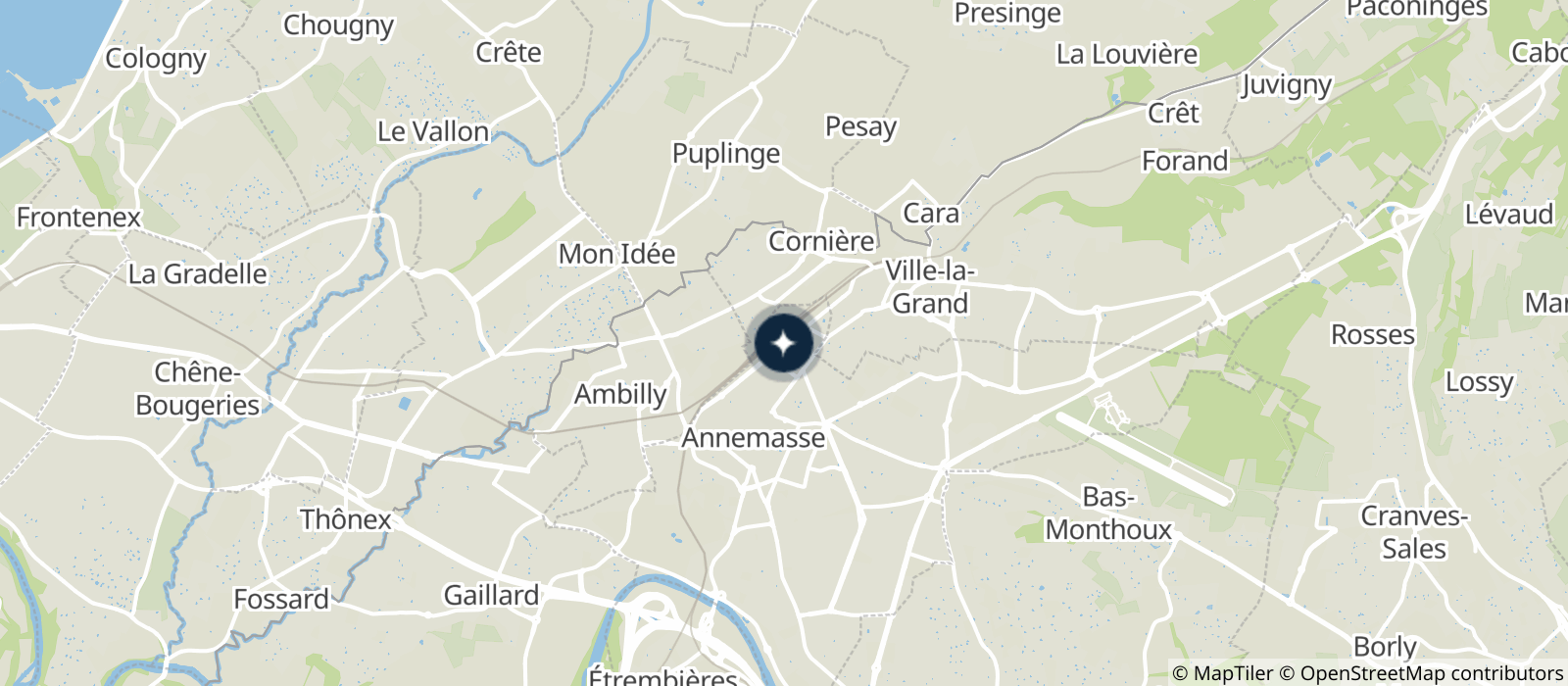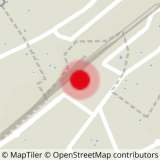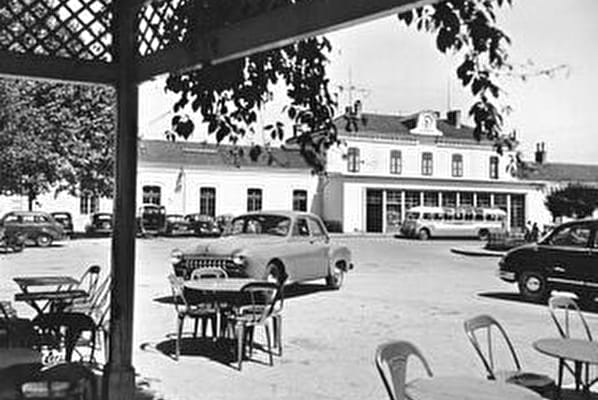The project
The project for a railway line linking Collonges, Annemasse and Thonon dates back to a decree made by Napoleon III on 22 December 1860. However, it took twenty years for the line to be put into service.
The route of the railway line
The State altered the line's route to the border, as in 1860 it was inconceivable that French soldiers could stop at or even cross into Switzerland by train. However, the boundaries around communities were not taken into account. The route isolated a part of Ambilly, and the location selected for Annemasse station was in Ville-la-Grand! This was a disappointment for the elected representatives of Annemasse, who had hoped that the train would arrive at Château-Rouge, the town's nerve centre. After some negotiations, the three communities agreed on an exchange of land and the Town Council considered extending Annemasse towards the station.
Annemasse: an important railway junction
The station was finally opened in 1880 and the Compagnie PLM, Paris-Lyon-Marseille was put in charge of the management. Three years later on 10 July 1883, the 'Annemasse-La Roche' line was created. That same year, a landslide on the Bellegarde-Geneva line renewed Swiss interest in the idea of creating a line between Cornavin and Annemasse. This is how the Annemasse-Vollandes line (later called Geneva- Eaux-Vives) finally came into being in June 1888! Finally, between 1888 and 1891, the construction of the Annemasse-Sixt line allowed Annemasse to be linked to the Vallée du Giffre. From then on, Annemasse station became an important railway junction.
The station - a factor in development
The arrival of the railway radically changed the town. In 1883, the creation of a town centre was planned around where the 'Place de la Mairie' is today. It was to be linked to the station by a new road, which is now the 'Avenue de la Gare' and the 'Rue de la Gare'. 'La Place du Triangle' (now 'Place Jean Deffaught), 'Rue du Mont-Blanc', Rue du Nord' (now 'Rue du Docteur Favre), 'Rue du Môle and 'Rue des Alpes' were also planned. Shops, hotels and factories, attracted by the railway, arrived in the town and boosted the local economy. In 1876, Annemasse had only 1,221 residents, yet by 1911 this had grown to 3,300, to 6,000 in 1926 and to 8,000 in 1936!
A place of transit
The railway also allowed travel across the border. Between 1914 and 1918, Annemasse saw thousands of refugees and returnees, women, children and the elderly pass through the town who were fleeing the combat zones or who had been evacuated, During the Second World War, the station was again a strategic point for those seeking to escape the oppression of the Nazis. Several railway workers took an active part in the Resistance.
The construction of the station
The architectural style of the station could be said to be classic Third Republic. Building work lasted from 1878 to 1880. Other additional buildings were added, including the the engine house (which was designed to house and repair up to 48 locomotives), the customs offices, the Taponnier shed, the station café and the training centre. The station's façade has undergone many changes throughout the years. In 1920, a canopy was added, and then replaced in 1960 by a glass projection, This was removed in turn in the 1980s. The building continued to be developed with the arrival of the CEVA (Cornavain-Eaux-Vives-Annemasse) line and the Léman Express. The engine house was demolished in 2017 and the old station was moved to a new, modern, light and fully glazed building.
- Historic site and monument
Place de la Gare and its history

Place de la Gare d'Annemasse bears witness to the richness of its railway history. The coming of the railway initiated the town's growth. The square is one of the oldest and its buildings conserve the memory of the town's past.
About
This square is sure to delight railway history buffs, thanks to the preservation of the former PLM railway station (now the Café Léman) and the former CEN railway station (home to the Monts de Genève Tourist Office and TAC).
Prices
Free access.
Reception
Opening
All year round, daily.
Labels and rating
Services
- Wi-fi
- Tourist brochures
- Tourist information
- Cash point
- Restaurant
- Tour free of charge
- Fast food
- Public WC
Contacts
Access





